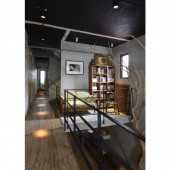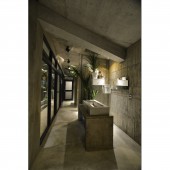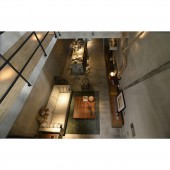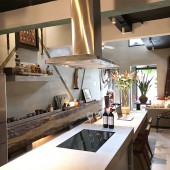DESIGN NAME:
Absolute Nature
PRIMARY FUNCTION:
Residence
INSPIRATION:
The site is situated in Hengchun Peninsula in Southern Taiwan which is rich in verdant scenery and aboriginal settlement. Since the client is involved in the creation of aboriginal arts and crafts, the initial concept of the spatial characters is hence inspired by the stone slab house and the ecological characteristic, utilized sustainable materials and construction methods to sustain the architecture, while integrating aboriginal cultures and arts elements into the design.
UNIQUE PROPERTIES / PROJECT DESCRIPTION:
The project restores its original beauty, at the same time incorporate recyclable materials to reduce waste and save energy. Open plan layout introduces natural lighting and ventilation, complimented with garden pool landscaping and greeneries to resemble immortality. A wide variety of handicrafts is utilized to reactivate the space and act as a presentation of life style. The project tends to integrate natural ecology with arts and humanities while promoting a healthy lifestyle environment.
OPERATION / FLOW / INTERACTION:
The original windows are too small, and the stairs located in the center of the house leads to poor internal ventilation and insufficient natural lighting. After the transformation, the original windows are replaced with glass walls and high-ceiling design and skylights are introduced. The interior staircase that obstructed the spatial connections and circulations is removed and replaced with a more porous, single stringer staircase at the end of the building to allow an open, unobstructed internal layout.
PROJECT DURATION AND LOCATION:
The project is completed in June, 2018 in Pingtung City, Taiwan.
FITS BEST INTO CATEGORY:
Interior Space and Exhibition Design
|
PRODUCTION / REALIZATION TECHNOLOGY:
Cement, Glass, driftwood, Terracotta tiles, Ceramic Tiles, Metal pieces, Wood crafts
SPECIFICATIONS / TECHNICAL PROPERTIES:
It is a four-story building with a total area of 245 square meters including the outdoor garden. The interior spaces are mainly comprised of living room, dining room and kitchen on the first floor, reading area and multi-purpose room on the second floor, studio and lounge with storeroom on the third floor, and bedroom, washroom, steam room, etc. on the fourth floor.
TAGS:
Reformation of old building, aboriginal arts, natural habitat, sustainable design, residential design
RESEARCH ABSTRACT:
The facade of the old building is covered with traditional, non porous iron gates and iron windows. Openings on both the front and rear sides of the building are increase ventilation, while introducing greeneries to regulate microclimate. The reconstruction and design have revolved around the existing building structures which reflect local culture and respond to the surrounding context. The use of raw materials for decorations and recycled waste timber made furniture revitalize the old space.
CHALLENGE:
The casting of the cement walls is a major challenge during the construction process. As the overall space has to maintain the original appearance of the cement mortar, the casting needs to be completed in very limited time and parts of the wall surface that contain totem design with lines and uneven corners have all increased the difficulty of the application.
ADDED DATE:
2019-06-29 15:40:04
TEAM MEMBERS (2) :
Designer: Tsai Li Hsu and Designer: Lin Cheng Chuan
IMAGE CREDITS:
image #1 : Mei De Advertisement Design Photography, 2019
image #2 : Mei De Advertisement Design Photography, 2019
image #3 : Mei De Advertisement Design Photography, 2019
image #4 : Mei De Advertisement Design Photography, 2019
image #5 : Mei De Advertisement Design Photography, 2019
|










